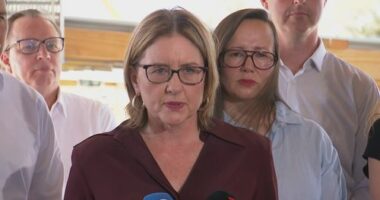Share this @internewscast.com
Australians might have basked through an unseasonably warm autumn, but not everyone is enjoying the unusually summery weather.
New retail data released today by the Australian Bureau of Statistics showed that Australians spent less in April than the month before.
That was due in part to the warm weather, which stopped shoppers from reaching for new winter purchases.

“According to Robert Ewing, head of business statistics at the ABS, clothing retailers reported that the unusually warm weather for April resulted in people delaying their purchase of clothing items, particularly the new winter stock.”
Australia sweated through its hottest March on record, and April temperatures were a degree above the long-term average.
“In April, overall spending decreased by 0.1 percent. This decline occurred despite the Easter and Anzac Day holidays, which were anticipated to boost sales. However, spending on clothing and footwear saw a more significant drop of 2.5 percent during the month.”
There was a notable bounce back in Queensland, though, as households spent more following the destruction caused by Cyclone Alfred.
“Queensland retailers recovered from last month’s temporary business closures and fewer customers,” Ewing said.

“In April, we saw higher spending in the industries most impacted by ex-Tropical Cyclone Alfred.
“More people dined out and made recovery purchases on household items like furniture and electrical goods.”
“The ABS also published recent data regarding housing approvals, which have declined to their lowest point since last August and are far below the levels needed to achieve the federal government’s targets for 2029.”
“Even on a three-month annualised basis, approvals are running at around 187,000 per annum (which is an 18 per cent increase from the 2023 trough, but 26 per cent below the peak in 2021),” AMP economist My Bui said.
“The key to getting housing approvals (as well as housing completions) up is to have more units in the mix, rather than detached houses.
“At the peak, units accounted for about half of all approvals, but in April only 35 per cent of building approvals were units.
“With Australia’s chronic undersupply issue, we should be building roughly 240,000 dwelling units per year â similar to the number targeted in the national housing accord… it is now much harder to see the target being met.”












